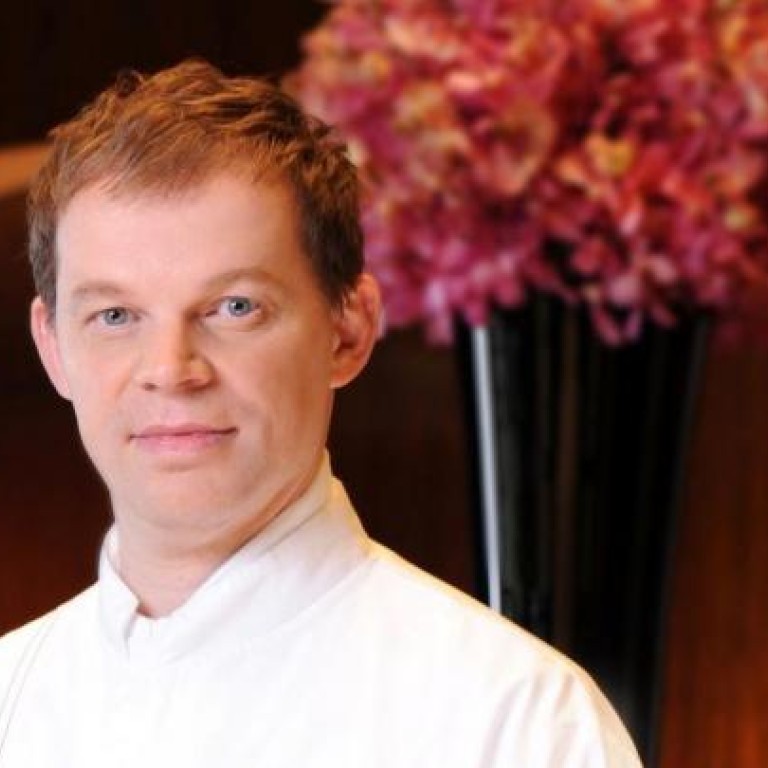
Hot culinary trends for 2013
What does the culinary world have in store for Hong Kong this year? Vicki Williams seeks out the experts to get a taste of things to come
One doesn't need a crystal ball to determine culinary trends in Hong Kong. As a follower rather than a leader of trends, we generally take our cue from what the most influential chefs are saying and doing overseas.
The popularity of Peruvian food is a case in point. After former El Bulli chef Ferran Adria said last year that Peru was the future of gastronomy, Peruvian cuisine became a global trend. A second Peruvian restaurant will open in the city this year.
Similarly, the foraging trend, championed by the likes of Noma chef Rene Redzepi, encouraged other chefs around the world to search for local, wild ingredients. But as foraging is illegal in Hong Kong, the best our chefs can do is work with farmers to grow specific produce.
Will fusion return as one of this year's culinary trends now that Adria is poised to open his new Barcelona restaurant, Pakta, which will serve Peruvian-Japanese fusion? At least one Hong Kong culinary expert thinks so. Here, 10 food experts share their thoughts on these and other hot trends for the year.
I expect there to be more restaurants opened by chef-owners. Young local chefs are gaining confidence, while younger customers have a more open and respectful attitude to these chefs, giving them the support and encouragement to develop. We may also see an influx of European chefs opening restaurants because the economy is so bad in Europe.
From my 50 years of experience in gastronomy in Hong Kong, I can see that fusion food will be popular, as chefs are increasingly experimenting with different ways of cooking as they travel more, discover new produce to cook with and more creative presentation. Personally, I hope that some chefs will cook a single cuisine authentically so the younger generation understands the origins of fusion cuisine.
Due to food safety scares and growing consumer awareness, there will be demand for high quality, but not necessarily organic, food produced in a natural way. Although "farm to table" is popular overseas, it's not easy to apply in Hong Kong, but I think that will change. I am trying to hook up with farms and suppliers to get high quality products for my restaurants.
After the opening of artisan pastry and bakery shops, the next trend will be European-style, traditional butcheries, opened by artisans skilled in the craft. It is all part of going back to small, quality-driven shops that truly specialise. Well raised meat will be hand selected and every part of the animal used. This is a logical evolution in Hong Kong after the steakhouse explosion of the past two years.
A major trend will be a continued focus on healthy eating; for example, dishes that use less fat, less salt and lighter sauces that also use ingredients considered good for health by the Chinese, such as mushrooms from Yunnan and wild snow goose. This is largely due to people having less time to exercise, so consuming a low fat diet supplemented with nourishing soups and vegetable dishes is the modern way to be healthy.
There is only one restaurant trend which can be confidently predicted for 2013: more small and medium-sized, independently operated restaurants and cafes will close during the year thanks to landlord greed. This means that, especially among modestly priced restaurants, diners will increasingly be forced to eat in big chain-operated establishments where much of the menu comes from a food factory.
A couple of the biggest chains are becoming aware of consumer resistance to their ubiquity and have started developing a host of new brand names, disguising the fact that they are all run by the same company. Smaller establishments are now moving to less fashionable areas (extreme eastern and western parts of Hong Kong Island and the New Territories), so this is where to look for better deals in 2013.
I foresee three trends:
- Brazilian - with the world cup less than 18 months away and the Olympics heading to Rio in 2016, expect to see the Brazilian influence creeping into bars and restaurants over the next few years.
- Bespoke - customers are set to take more control of what they eat. This can be as simple as matching their sauce and pasta variety, designing their own pizza or burger.
- Origins - after the decade of science in food, it will be back to basics. Ingredients are set to become the new food heroes with a focus on sourcing the best quality products, at the right time, in optimum condition, so expect to see a simplicity in many restaurant menus with the emphasis on provenance.
Kwok Keung-tung, head chef, The Chairman
I think there will be four key trends:
- Hearty, back-to-basics home cooking.
- Green - including organic, local produce, in-house made sauces, and in-house cured meats.
- Small restaurants will emerge with their own character and cuisine.
- Regional specific - with an increasingly well travelled population, restaurants will focus on one region, especially in Chinese and Italian cuisines.
